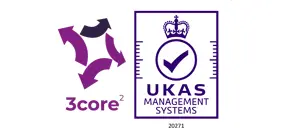A few days ago, the big bell at Westminster Abbey tolled 72 times to commemorate the 5th anniversary of the Grenfell fire in remembrance of the victims. Names of the deceased were read out by faith leaders at a service attended by survivors, the bereaved and politicians. Notwithstanding the issues that contributed to that terrible disaster, fires in people’s homes continue to take a terrible human toll.
Although the number of fire fatalities has reduced significantly over the recent decades, there are still approximately 37,000 house fires every year in the UK and some 200 fire-related deaths.
Most of us know how smoke quickly travels and insidiously spreads throughout a building that is on fire, making escape far more difficult (due to lack of visibility and smoke inhalation), trapping people inside the building. Before the fire hits its flash point (when the contents of the room or space suddenly and simultaneously ignite), the smoke becomes extremely thick and black. This smoke has a very high temperature and is extremely toxic, in other words, it’s deadly.
People therefore need to evacuate a building as quickly as possible to avoid the above, which is why effective and fully operating smoke and fire alarms throughout a property are so important, and also should never be ignored when they go off.
Although the statistics on carbon monoxide (CO) related deaths are not so detailed, according to data from the ONS, in 2020 there were 116 deaths caused by carbon monoxide poisoning in England and Wales.
Regrettably, understanding of the dangers of CO is not so widespread. It is a colourless, odourless, tasteless gas produced by burning petrol, wood, propane, charcoal or other fuel. Improperly ventilated appliances and engines, particularly in a tightly sealed or enclosed spaces, can allow CO to accumulate to dangerous levels.
After carbon monoxide is breathed in, it enters the bloodstream and mixes with haemoglobin (the part of red blood cells that carry oxygen around the body) to form carboxyhaemoglobin. When this happens, the blood is no longer able to carry oxygen and this lack of oxygen causes the body’s cells and tissue to fail and die. High concentrations of carbon monoxide can kill in less than five minutes. The most common symptoms of CO poisoning are headache, dizziness, weakness, upset stomach, vomiting, chest pain, and confusion. CO symptoms are often described as “flu-like.” If a lot of CO is breathed in, it can quickly cause unconsciousness or death. People who are sleeping or drunk can die from CO poisoning before they even have symptoms.
Alarms save lives and our guardians can sleep safe in their beds as all the properties in our care are not only fitted with both smoke and carbon monoxide alarms, there are heat alarms in every kitchen as well as proper fire extinguishers and fire safety equipment provided in every building. Finally, our maintenance teams regularly check all these alarms and equipment – looking after our people is always our top priority.
Are you ready for affordable accomodaton?
Follow our easy process to become a guardian and save on your accomodation.
Have a property that needs securing?
Our friendly team will explain how we can help you securing your empty property

Latest Blogs
- 1
- 2
- 3
- 4
- 5
- 6




